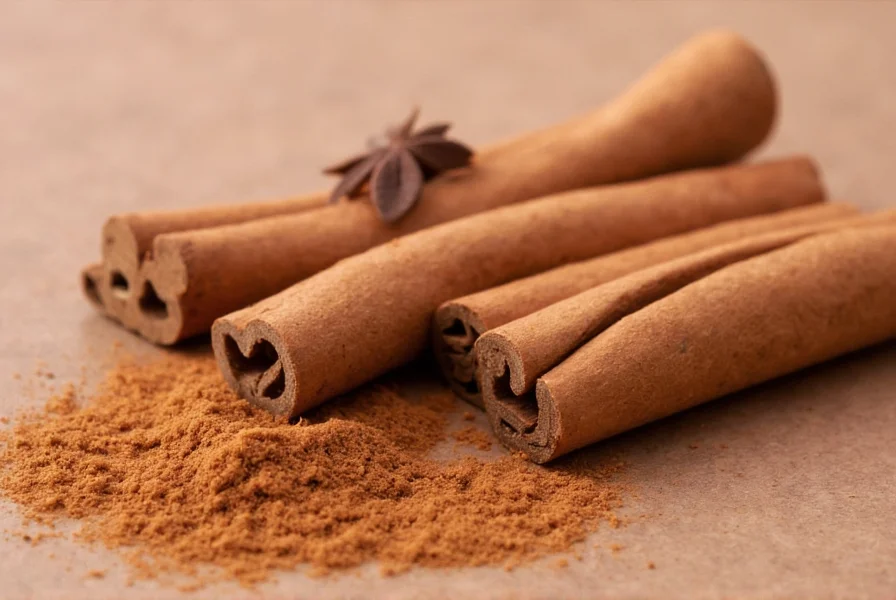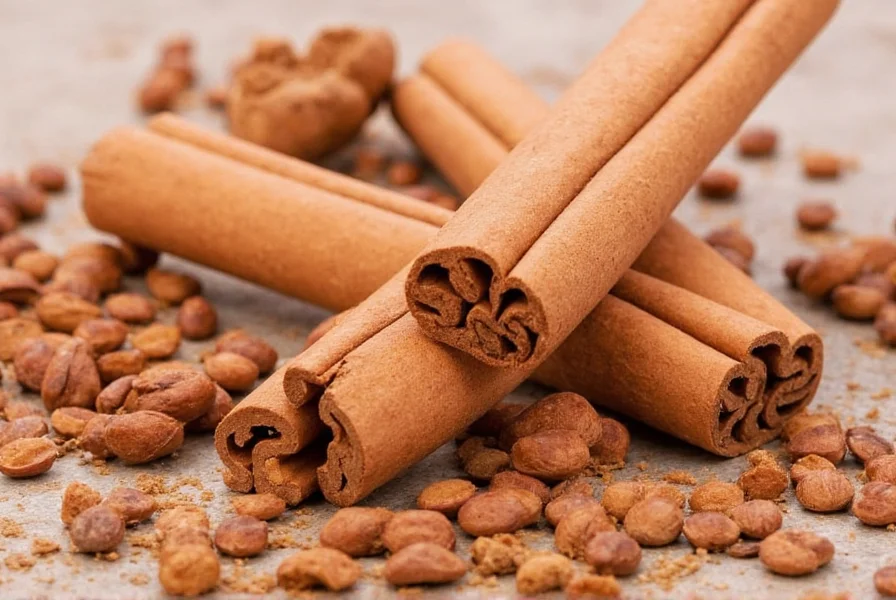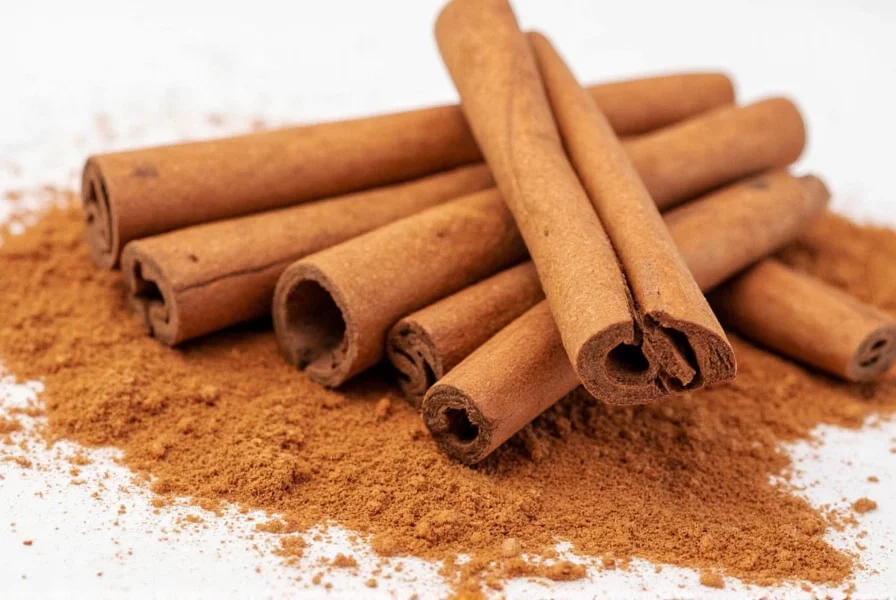Yes, cinnamon doesn't technically spoil in a way that makes it unsafe to eat, but it does lose potency and flavor over time. Ground cinnamon typically maintains peak quality for 1-2 years, while cinnamon sticks can last 3-4 years when stored properly. The main concern with aged cinnamon is diminished flavor rather than safety risks, though improper storage can lead to moisture absorption or contamination.
Understanding cinnamon's shelf life is essential for maintaining the quality of your culinary creations. Unlike perishable foods that can become dangerous when expired, cinnamon falls into the category of dried spices that gradually lose their aromatic compounds and flavor profile. This natural degradation process affects your dishes more than your health.
How Long Does Cinnamon Last?
Cinnamon's longevity depends on its form and storage conditions. Here's a detailed breakdown of expected shelf life:
| Cinnamon Type | Best Quality Period | Maximum Usable Period | Storage Recommendation |
|---|---|---|---|
| Ground Cinnamon | 1-2 years | 2-3 years | Airtight container, cool dark place |
| Cinnamon Sticks (Quills) | 3-4 years | 4-5 years | Airtight container, cool dark place |
| Homemade Cinnamon Powder | 6-12 months | 1-2 years | Refrigerated, airtight container |
| Commercial Cinnamon Extract | 2-4 years | 4-5 years | Cool place, away from light |
The "best by" date on commercial cinnamon packaging indicates peak flavor quality rather than safety. Properly stored cinnamon remains safe indefinitely, though its culinary value diminishes significantly after the recommended time frames.
Signs Your Cinnamon Has Lost Quality
While cinnamon rarely becomes unsafe, several indicators show when it's lost its optimal flavor and aroma:
- Faded aroma - Fresh cinnamon has a strong, sweet-spicy scent. If you need to crush it vigorously to detect any fragrance, it's past prime
- Color changes - Ground cinnamon should be reddish-brown. Significant lightening or darkening suggests degradation
- Clumping - Moisture exposure causes ground cinnamon to form hard clumps
- Mold growth - Visible mold indicates moisture contamination (rare but possible with improper storage)
- Off-flavors - Stale cinnamon tastes flat or musty rather than warm and complex

Proper Cinnamon Storage Techniques
Maximize your cinnamon's shelf life with these storage methods:
Store cinnamon in an airtight container away from heat, light, and moisture. Glass jars with tight-sealing lids work better than plastic containers, which can absorb odors. The ideal storage location is a cool, dark pantry cupboard—not above the stove or near the dishwasher where temperature and humidity fluctuate.
For extended storage, consider keeping cinnamon sticks in the freezer. Wrap them in aluminum foil first, then place in a freezer bag with the air removed. This method preserves volatile oils for up to five years. Ground cinnamon doesn't freeze well due to moisture risks when thawing.
Can You Use Expired Cinnamon Safely?
Expired cinnamon remains safe to consume in most cases. The primary concern is diminished flavor rather than health risks. If your cinnamon shows no signs of mold, insects, or unusual odors, it's generally safe to use.
When using older cinnamon, you may need to increase the quantity to achieve the desired flavor intensity. For baking applications, consider toasting slightly stale cinnamon sticks in a dry pan for 30-60 seconds to revive some aromatic compounds before grinding.
Discard cinnamon immediately if you notice any mold growth, insect infestation, or if it develops an off-putting chemical smell—these indicate contamination that could potentially cause illness.
Testing Cinnamon Potency
Before using older cinnamon in important recipes, test its potency with these methods:
- The sniff test - Crush a small amount in your palm and smell. Strong, sweet aroma indicates good quality
- The taste test - Mix ¼ teaspoon with warm water. Vibrant flavor means it's still potent
- The visual inspection - Check for consistent color and absence of clumps or moisture
For professional kitchens or serious home cooks, consider maintaining a spice journal noting purchase dates to track shelf life more accurately. Many chefs replace ground spices annually and whole spices every 18-24 months for optimal flavor in their dishes.
Does Cinnamon Lose Nutritional Value Over Time?
While cinnamon's primary appeal is its flavor, it also contains beneficial compounds like cinnamaldehyde and antioxidants. Research shows these compounds gradually degrade over time, with studies indicating up to 50% reduction in antioxidant capacity after two years of storage.
If you use cinnamon specifically for potential health benefits, fresher product provides more significant nutritional value. However, even older cinnamon retains some beneficial properties—just at reduced levels compared to freshly purchased product.

Reviving Slightly Stale Cinnamon
If your cinnamon has lost some potency but shows no signs of spoilage, try these revival techniques:
- Toast whole cinnamon sticks in a dry skillet over medium heat for 1-2 minutes until fragrant
- Grind older sticks fresh when needed rather than using pre-ground cinnamon
- Store small quantities in your spice drawer and keep the main supply in a cool basement location
- Combine slightly stale cinnamon with complementary spices like nutmeg or allspice to enhance overall flavor profile
Remember that these methods can only partially restore flavor—they won't return old cinnamon to its original potency. For critical recipes, fresh cinnamon always delivers superior results.
FAQs About Cinnamon Shelf Life
How can I tell if my ground cinnamon has gone bad?
Ground cinnamon that has degraded will have a significantly weaker aroma—you might need to crush it vigorously to detect any scent. It may appear lighter in color, form hard clumps from moisture exposure, or taste flat rather than warm and complex. While it rarely becomes unsafe, these signs indicate diminished culinary value.
Can old cinnamon make you sick?
Properly stored cinnamon rarely becomes unsafe to consume. The main issue with aged cinnamon is flavor loss rather than health risks. However, discard cinnamon immediately if you notice mold growth, insect infestation, or chemical-like odors, as these indicate contamination that could potentially cause illness.
Does cinnamon expire if kept in the refrigerator?
Refrigeration isn't recommended for most cinnamon storage as the moisture-rich environment can cause clumping and accelerate flavor loss. Whole cinnamon sticks might benefit from freezer storage (properly wrapped), but ground cinnamon should remain in a cool, dark pantry. Refrigeration introduces moisture risks that can degrade quality faster than proper pantry storage.
How long does homemade cinnamon powder last compared to store-bought?
Homemade cinnamon powder typically has a shorter shelf life (6-12 months for best quality) compared to commercial products (1-2 years). This difference occurs because commercial processors use specialized grinding and packaging techniques that better preserve volatile oils. For longest shelf life with homemade powder, store it in the refrigerator in an airtight container.
Can I extend cinnamon's shelf life by freezing it?
Whole cinnamon sticks can be successfully frozen to extend shelf life up to five years. Wrap them tightly in aluminum foil, then place in a freezer bag with as much air removed as possible. Ground cinnamon doesn't freeze well due to moisture risks during thawing cycles. When using frozen sticks, allow them to reach room temperature before opening the package to prevent condensation.











 浙公网安备
33010002000092号
浙公网安备
33010002000092号 浙B2-20120091-4
浙B2-20120091-4